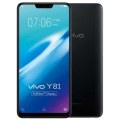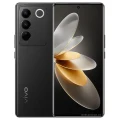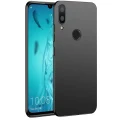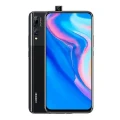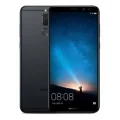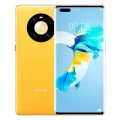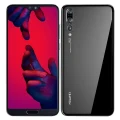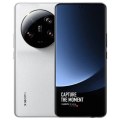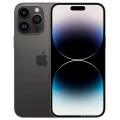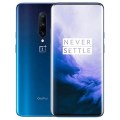- Awesome page
- Latest Mobile
- Smartphones
- Vivo Y53s
Vivo Y53s
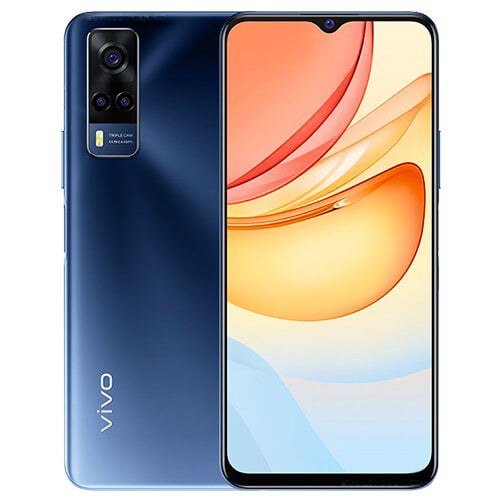


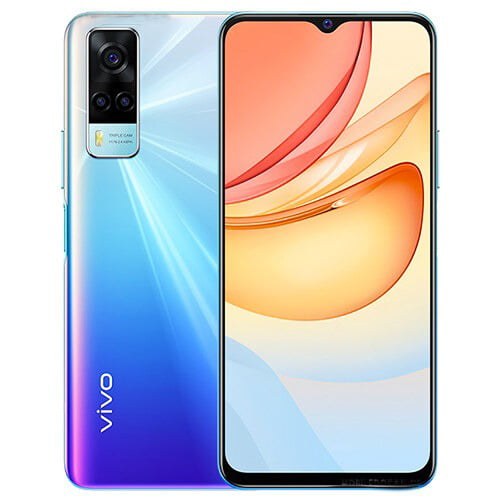
Vivo Y53s 4G Price in Bangladesh 2024
The Vivo Y53s 4G Price in Bangladesh is BDT 20,990, available with 128GB of storage and 8GB of RAM. This smartphone features a 5000mAh battery with 33W fast charging for quick recharges and extended usage. It runs on Android 11 and is powered by the MediaTek Helio G80 (12 nm) chipset. The Vivo Y53s 4G Price in Bangladesh reflects its strong performance, large battery, and fast charging capabilities, making it a solid choice in its price range.
Specifications
General
| Model | Vivo Y53s 4G |
| Announced | 2021, July 09 |
| Released | 2021, July 09 |
| Status | Available |
| Official price | 8GB 128GB ৳20,990 |
Design
| Dimensions | 164 x 75.5 x 8.4 mm (6.46 x 2.97 x 0.33 in) |
| Weight | 190 g (6.70 oz) |
| Colors |
Blue Purple, Black Green |
Network
| Technology | GSM / HSPA / LTE |
| 2G Network |
GSM 850 / 900 / 1800 / 1900 - SIM 1 & SIM 2 |
| 3G Network |
HSDPA 850 / 900 / 1700(AWS) / 2100 |
| 4G Network |
1, 3, 5, 7, 8, 20, 38, 40, 41 |
| GPRS <strong>GPRS</strong> (General Packet Radio Service) is a packet oriented mobile data service on the 2G and 3G cellular communication system's global system for mobile communications (GSM), Generally, GPRS is used for the purpose of wireless data transfer, such as sharing pictures and videos or browsing the Internet via a mobile phone connection. | |
| EDGE <strong>EDGE</strong> (Enhanced Data GSM Environment) is a wireless network technology generally considered the next step in the 2G network offers data transfer rates up to four times faster than ordinary GSM networks, Generally, EDGE is used for the purpose of wireless data transfer, such as sharing pictures and videos or browsing the Internet via a mobile phone connection. | |
| Speed | HSPA 42.2/5.76 Mbps, LTE-A |
Display
| Display Type <strong>Display Technology => </strong> A number of display technologies and types used in mobile phones => TFT (Thin Film Transistor), IPS (In-Place Switching), OLED (Organic Light Emitting Diode), AMOLED (Active-Matrix Organic Light-Emitting Diode), Super AMOLED (an even advanced version of AMOLED), Resistive Touchscreen (Resistive touchscreens contain two layer of conductive material with a very small gap between them which acts as a resistance), Capacitive Touchsceen (Capacitive touchscreen technology consists of a layer of glass coated with a transparent conductor) | IPS LCD capacitive touchscreen, 16M colors |
| Size | 6.58 inches, 104.3 cm2 (~84.2% screen-to-body ratio) |
| Resolution | 1080 x 2408 pixels, 20:9 ratio (~401 ppi density) |
Camera
Main camera
| Camera Setup | Triple |
| Primary <strong>Camera</strong> is able to capture photographs and usually videos, The most important characteristics of a camera are the resolution (measured in megapixels), lens focus type (fixed or automatic), higher megapixel cameras are known to capture higher quality photos, but not always a good measurement of the photos quality. |
64 MP, f/1.8, 26mm (wide), 1/1.97&quot;, 0.7µm, PDAF 2 MP, f/2.4, (macro) 2 MP, f/2.4, (depth) |
| Features |
LED flash, HDR, panorama |
| Video | 1080p@30fps, gyro-EIS |
Selfie camera
| Camera Setup | Single |
| Primary <strong>Camera</strong> is able to capture photographs and usually videos, The most important characteristics of a camera are the resolution (measured in megapixels), lens focus type (fixed or automatic), higher megapixel cameras are known to capture higher quality photos, but not always a good measurement of the photos quality. |
16 MP, f/2.0, (wide) |
| Video | 1080p@30fps |
Hardware
| Chipset <strong>Chipset</strong> is a group of integrated circuits designed to perform one or a more dedicated functions, often with real time computing constraints, Popular smartphones are equipped with more advanced embedded chipsets that can do many different tasks depending on their programming. | Mediatek Helio G80 (12 nm) |
| CPU <strong>CPU</strong> (Central Processing Unit) mostly known as processors, CPU processes instructions in order to carry out certain functions that make your device operate properly. Processors are often described as the brain of computers, smartphones and tablets, Smartphones and tablets rely on processors to carry out their every task, Processors are an incredibly important factor in selecting any type of computing device, including your smartphone. | Octa-core (2x2.0 GHz Cortex-A75 & 6x1.8 GHz Cortex-A55) |
| GPU <strong>GPU</strong> (Graphics Processing Unit) is a single-chip processor designed to rapidly manipulate and alter memory to accelerate the creation of images in a frame buffer intended for output to a display, This includes things such as lighting effects, object transformations, and 3D motion. | Mali-G52 MC2 |
| RAM (Memory) <strong>RAM</strong> (Random Access Memory) is a type of computer memory that can be accessed randomly, any byte of memory can be accessed without touching the preceding bytes that allows information to be stored and accessed quickly from random locations. RAM is the most common type of memory found in computer systems, smartphones, tablets and other electronic devices. | 8 GB |
| Internal Storage <strong>Internal Storage</strong> is a data storage space (flash memory) mostly used in smartphones, tablets and other electronic devices where operating system, apps, music, photos, videos, files and other user data Is stored. | 128 GB |
| Sensors <strong>Sensors</strong> are electronic components that detects and responds to some type of input from the physical environment. The specific input could be light, heat, motion, moisture, pressure and location, The output is generally a signal that is converted to use in computing systems, a location sensor, such as a GPS receiver is able to detect current location of your electronic device. |
Fingerprint (side-mounted), accelerometer, gyro, proximity, compass |
Connectivity
| Bluetooth <strong>Bluetooth</strong> is a wireless communications technology for exchanging data between mobile phones, headsets, computers and other network devices over short distances without wires, Bluetooth technology was primarily designed to support simple wireless networking of personal consumer devices. | 5.1, A2DP, LE |
| Infrared <strong>Infrared</strong> connectivity is an old wireless technology used to connect two electronic devices. It uses a beam of infrared light to transmit information and so requires direct line of sight and operates only at close range. | |
| USB | USB Type-C 2.0, USB On-The-Go |
| GPS <strong>GPS</strong> The Global Positioning System is a satellite-based radio navigation system, GPS permits users to determine their position, velocity and the time 24 hours a day, in all weather, anywhere in the world, In order to locate your position, your device or GPS receiver must have a clear view of the sky. | Yes, with A-GPS |
| NFC <strong>NFC</strong> (Near field communication) is a set of standards for smartphones and similar devices to establish peer-to-peer radio communications with each other by touching them together or bringing them into proximity, usually no more than a few inches. |
Battery
| Battery Type <strong>Battery Type => </strong> Cell phones run on various kinds of batteries depending on the manufacturer, phone size or shape and features. There are basically four types of cell phone batteries => Lithium Polymer, Lithium Ion, Nickel Metal Hydride and Nickel Cadmium. | Non-Removable Li-Po |
| Capacity <strong>Battery Capacity</strong> is a measure (typically in Amp-hr) of the charge stored by the battery, and is determined by the mass of active material contained in the battery. The battery capacity represents the maximum amount of energy that can be extracted from the battery under certain conditions. | 5000 mAh |
| Charging Charging | Fast charging 33W, 100% in 15 min (advertised) |
Vivo Y53s Review: A Deep Dive into the Perfect Mid-Range Contender
Introduction
The smartphone market is brimming with options, each vying for attention with its unique features. Amidst this bustling landscape, the Vivo Y53s has carved a niche for itself. Whether you’re a tech enthusiast or a regular smartphone user, understanding what this device brings to the table can be crucial in making an informed choice. This review will walk you through every aspect of the Vivo Y53s, from its design to its performance and beyond.
Design and Build
The Vivo Y53s boasts an elegant design that immediately catches the eye. Crafted with a sleek plastic body, it offers a high-gloss finish that gives it a premium feel. The phone’s ergonomic design ensures it fits comfortably in your hand, making one-handed use a breeze.
Despite its plastic build, the Y53s feels solid and durable. The rear panel houses a triple-camera setup neatly aligned in a vertical module, giving it a modern and sophisticated look. The side-mounted fingerprint scanner doubles as the power button, adding to the design’s seamlessness.
The color variants, like Deep Sea Blue and Fantastic Rainbow, add a touch of flair to the overall aesthetic, ensuring there’s a style to match everyone’s taste.
Display and Audio
The Vivo Y53s features a 6.58-inch FHD+ display, offering a resolution of 2408 x 1080 pixels. This ensures vibrant colors and sharp details, making it ideal for media consumption and gaming. The IPS LCD panel provides wide viewing angles, which means you won’t miss out on details even when viewing the screen from the side.
Audio quality is another area where the Y53s shines. The phone comes equipped with a single bottom-firing speaker that delivers clear and loud sound. While it might not offer the depth and richness of a stereo setup, it does a commendable job for everyday use.
For those who prefer using headphones, the Vivo Y53s includes a 3.5mm headphone jack—a feature that’s becoming increasingly rare in modern smartphones. This allows users to enjoy their music or podcasts without needing an adapter.
Performance
Under the hood, the Vivo Y53s is powered by the MediaTek Helio G80 processor, paired with 8GB of RAM. This combination ensures smooth performance for most tasks, from browsing the web to playing graphic-intensive games. The device also features an additional 3GB of extended RAM, which enhances multitasking capabilities.
Navigating the UI is a fluid experience, with apps opening quickly and transitions appearing seamless. The phone handles intensive tasks with relative ease, although it might exhibit minor slowdowns during prolonged gaming sessions.
Storage-wise, the Y53s offers 128GB of internal storage, which should be ample for most users. For those who need more, the phone supports expandable storage via a microSD card, allowing you to add up to 1TB of additional space.
Camera and Imaging
One of the standout features of the Vivo Y53s is its camera setup. It sports a triple-camera configuration on the back, comprising a 64MP primary sensor, a 2MP macro lens, and a 2MP depth sensor. This setup allows for versatile photography options, from detailed close-ups to well-composed portraits.
The primary 64MP sensor captures sharp and vibrant images in good lighting conditions. The level of detail and color accuracy are impressive for a mid-range device. The macro lens, although not as high in resolution, allows for interesting close-up shots, perfect for capturing intricate details.
In low-light conditions, the phone’s performance is decent, thanks to its Super Night Mode. This feature enhances brightness and reduces noise, ensuring your nighttime shots are clear and detailed.
Battery Life
Battery life is a critical factor for any smartphone user, and the Vivo Y53s does not disappoint. It is equipped with a 5,000mAh battery, which should comfortably last a full day of moderate to heavy use. Whether you’re streaming videos, browsing social media, or playing games, the Y53s has the stamina to keep up.
Charging speed is another highlight, with support for 18W fast charging. This means you can quickly top up the battery and get back to using your phone without long downtimes. In a world where time is of the essence, this feature adds significant value.
Software and User Experience
The Vivo Y53s runs on Funtouch OS 11.1, based on Android 11. This custom UI offers a range of features and customization options, allowing users to tailor their experience to their preferences. From theme adjustments to gesture controls, Funtouch OS provides a user-friendly and intuitive interface.
Performance is smooth, with minimal bloatware to clutter the experience. The OS includes various smart features, such as Ultra Game Mode, which optimizes the phone’s performance during gaming sessions. Additionally, the Multi-Turbo feature enhances network performance, CPU speed, and power efficiency.
Overall, the software experience on the Vivo Y53s is commendable, offering a blend of functionality and customization that appeals to a broad range of users.
Value for Money
In the highly competitive mid-range smartphone market, the Vivo Y53s offers a compelling package. Priced reasonably, it provides a host of features that are typically found in more expensive devices. The combination of a powerful processor, ample RAM, versatile camera setup, and long-lasting battery makes it a worthy contender.
When compared to other phones in the same price range, the Vivo Y53s holds its own, offering a balanced mix of performance, design, and functionality. For tech enthusiasts and regular users alike, this device presents excellent value for money.
Conclusion
The Vivo Y53s is a well-rounded smartphone that ticks many boxes for mid-range buyers. Its elegant design, vibrant display, solid performance, and versatile camera make it a strong competitor in its category. While it may not be perfect, with minor drawbacks in areas like audio quality and low-light camera performance, it excels in delivering a satisfying user experience overall.
If you’re in the market for a reliable and feature-rich smartphone without breaking the bank, the Vivo Y53s is definitely worth considering. Its blend of style, performance, and value makes it a standout choice for tech enthusiasts and general smartphone users alike.
Explore the Vivo Y53s today and experience firsthand what makes it a top pick in the mid-range segment.

